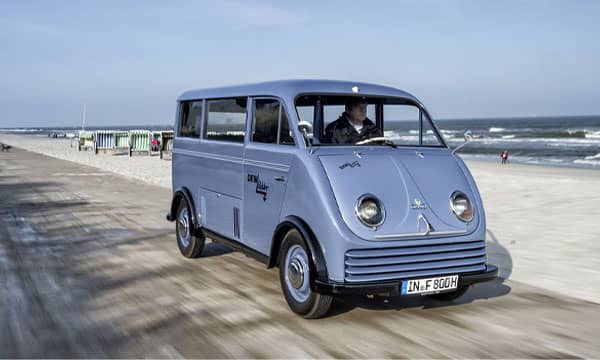The DKW Schnelllaster symbolised the rebirth of Auto Union in West Germany in 1949. It was the first model to be built by Auto Union after the Second World War and the first car to be produced in Ingolstadt. The design of the DKW Schnelllaster in a pioneering cab-over-engine construction was based on the proven DKW front-wheel drive technology from the pre-war period.
Initially equipped with a two-cylinder, two-stroke engine, from 1955 the DKW Schnelllaster was given the more powerful three-cylinder engine which had already been fitted in the DKW 3=6 car since 1953.
In 1955, Auto Union also presented the DKW Schnelllaster in a special version with an electric motor. This vehicle was delivered primarily to local authorities, municipal companies, battery manufacturers and utility companies. Some of these DKW Electric Schnelllaster were also used for transport purposes on the East Frisian Islands because vehicles with combustion engines are not allowed to operate on these islands.
The DKW Electric Vehicle was offered between 1955 and 1961 in three versions as a platform truck or van and as a wagon with windows down the sides.

Technical data
| Engine | Universal electric motor | ||||||||
| Power | 5 kW | ||||||||
| Battery | Lead, 80 volts nominal voltage, 210 Ah | ||||||||
| Transmission | Front-wheel drive, via duplex chain without mechanical gearbox | ||||||||
| Dimensions |
|
||||||||
| Tare weight | 1,960 kg | ||||||||
| Gross vehicle weight rating | 2,600 kg | ||||||||
| Top speed | 40 km/h | ||||||||
| Consumption | 25 kWh/100 km | ||||||||
| Nominal range | approx. 80 km | ||||||||
| Price | 8,000 DM (ohne Batterie) | ||||||||
| Manufacture period | 1955 – 1961 | ||||||||
| Total number built | approx. 100 |